Rebecca Eanes's Blog, page 7
May 1, 2016
Becoming Light Reflectors
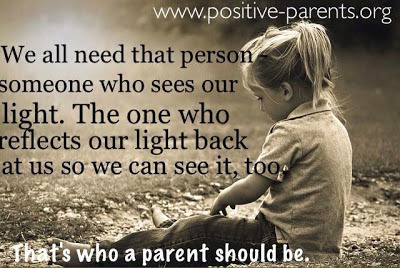
Think about this. The people in our lives who look past our faults and see our beauty, the ones who still see the light in us during the times we feel only darkness, those are the people who save us from the depths of blackness. Those are the ones who help us see our own beauty and light again.
We all need that person - someone who reflects our light back at us so we can see it, too. That's what a parent should be. That’s what it means to become light reflectors. We should always seek to see our child’s light, to hold it sacred, and to show it to them when they need a glimpse.
When we keep showing them their light, they’ll always be able to find their way. My friend and New York Times Best Selling Author, Rachel Macy Stafford, speaks beautifully on keeping protective hands around their inner light.
Practically, how can we do this? It begins with a decision to see the light in our kids, and this is profound because we very often focus mostly on the things we want to change rather than on the things we want to grow. It’s a mind shift.
It’s looking through a different lens – a positive one. This doesn’t mean that we let poor behavior slide or allow poor choices to go unchecked, but that even during times of correction, we are showing them their light.
This requires a mindful change in language that might look like this:
Dark reflector: “I’ve had enough of that bad attitude today. You’ve been a total grump since you got home.”
Light reflector: “You’re usually in such good spirits. It seems like something is bothering you today. How can I help?”
Dark reflector: “You’re in big trouble for hitting your sister you naughty boy!”
Light reflector: “Uh-oh, it’s not okay to hit your sister. I know you didn’t mean to hurt her. Come sit with me and I’ll help you get control of your frustration.”
Dark reflector: “I can’t believe this grade on your report card. Obviously you’ve been irresponsible this semester.”
Light reflector: “You’ve proven yourself to be a good student who works hard, so I’m a bit surprised at this grade. Can you explain this to me?”
Though it takes practice and intentionality, the goal is to shine a light on the child’s good qualities, even when they aren’t readily apparent. When we do this, it helps them to rise back up to that goodness. When we have unshakable faith in them, they learn to have faith in themselves.
Negative Traits:
Another practical application of being a light reflector involves re-framing any character traits we perceive as negative. Strong-willed might be seen as determined. Bossiness might be seen as leadership. High sensitivity can be seen as a strength rather than a weakness.
When we re-frame in this way, we can guide them in making these traits their strengths by teaching them how to own them in a positive manner whereas if we see them as negative traits, we will be constantly fighting against their nature.
Change Your Language:
Finally, be generous with affirming words. Children see themselves through the eyes of their parents, so make sure the good is reflected in your eyes. Make sure they know that you see their tremendous value. Remind them of their strengths when they are weak. Remind them of their successes when they fail.
Remind them of their goodness when they are feeling bad. Be the one person who never gives up on them, who never focuses on their darkness, who never points out all that is wrong with them. Be their light reflector. Show them all the beauty they have within.
We all have light and dark, the potential for good and bad. Unfortunately many haven’t realized their good potential because they didn’t have a light reflector in their life when they needed one.
“A friend is someone who knows the song in your heart and can sing it back to you when you have forgotten the words.” – Anonymous
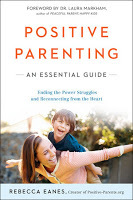 Rebecca Eanes, author of the upcoming book, Positive Parenting: An Essential Guide. Pre-order now.
Rebecca Eanes, author of the upcoming book, Positive Parenting: An Essential Guide. Pre-order now.**This post was originally published at Creative Child Magazine. Find more of my Creative Child articles here.

Published on May 01, 2016 09:45
April 30, 2016
To the Mom Who is Too Hard on Herself
 Photo Credit: Creative Child Magazine
Photo Credit: Creative Child MagazineDear Mom Who Is Too Hard On Yourself,
It’s shocking, isn’t it? Motherhood.
The way it stretches not only your body, but your mind and spirit, too. It stretches your ideas, your judgements, your dreams, and your fears. It takes your ego and throws it high into the air, then catches it and slams it down onto the ground hard. It forces you to confront the worst parts of yourself, sometimes by staring down into fierce little eyes that mirror your own determination or rage.
Motherhood isn’t just about raising children. Motherhood is where you, yourself, are raised up to your highest potential, if you’re open to it; if you listen.
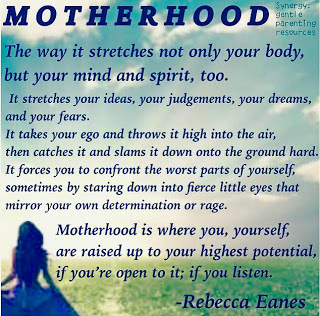
You know this is big. You understand how high the calling of motherhood is, and it’s beautiful and joyous and amazing. And it’s heavy. And every day you show up one more time and try. That’s really brave.
No one tells you how brave that is, but it really is brave to show up every single day when so very much is at stake, and you might have to crawl out of bed or off the floor and straighten those shoulders up, put on your best fake smile, and dust off yesterday’s perceived failures, but you do it anyway. Day after day.
Your mama heart wants so, so much to get this right. You love those babies so much it hurts, and when you slip up, when you snap at one of them, when you yell after promising to not yell anymore, when you feel like you have let them down, guilt and regret pool in your chest and it burns your throat.
The tears fall behind the bathroom door again, and your inner bully is relentless. She tears into you when you lay your head on your pillow after the kids are finally asleep, and no rest comes.
When you get a call from school or catch your preschooler telling lies or your toddler bites her friend, you wonder where you went wrong and if they’re going to turn out okay despite your mistakes and shortcomings.
When your teen slams the door in your face or the night’s homework battle turned into full on war and you’re dripping tears on the math worksheet you’re checking, I know you feel like a failure.
Here’s what you need to know, mama. The rest of us are crying in our bathrooms, too. Every other mother there ever was has felt those feelings of guilt and worried if they were getting it completely wrong at one time or another, so don’t think that the rest of us are getting this motherhood thing right every day while you’re struggling to find your way.
We are all trying to find our way. None of us are perfect. Not one.
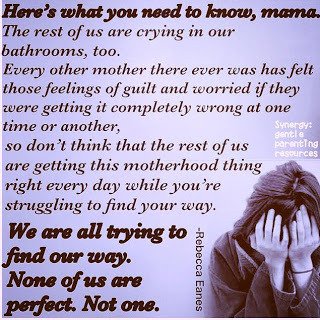
You have to stop being so hard on yourself. You have to cut the inner bully off and say “Shut up! No more!”
You have to extend to yourself the same love and tenderness and grace that you try to extend to your children because as much as they need it is as much as you need it, too.
And do you want to know a little secret? The more you treat yourself with gentleness, the more gentleness you can show others.
Make it your goal this week to shine a spotlight on your own goodness, successes, triumphs, and bravery. In your journal today, write down everything you did that was good. Write down how you made yourself proud!
And tonight, when you finally climb underneath the covers, don’t replay your mistakes in your mind. Replay how much you loved. Give yourself a little grace. Perhaps that’s the bravest thing of all.
Love,
A Mom Who Is Too Hard On Herself, Too
 Rebecca Eanes, author of the upcoming book, Positive Parenting: An Essential Guide. Pre-order now.
Rebecca Eanes, author of the upcoming book, Positive Parenting: An Essential Guide. Pre-order now.**This post was originally published at Creative Child Magazine. Find more of my Creative Child articles here.

Published on April 30, 2016 09:50
March 1, 2016
Disciplining the Sensitive Child
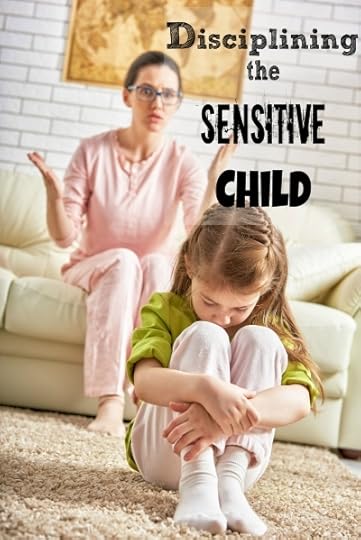
Photo Credit: Creative Child Magazine
My firstborn is a highly sensitive child. I didn’t realize this fact until he was three, and I didn’t fully understand it until he was four and a half when I read Ted Zeff’s book, The Strong, Sensitive Boy. Without the knowledge and understanding of my son’s sensitivity, I disciplined him in ways that damaged his self-esteem and our bond.
This is, in fact, the very reason I began to research parenting philosophies and landed, eventually, on positive parenting. It was because I could see pain and sadness in his eyes during time-out that I eventually rejected traditional discipline tactics and chose gentle discipline instead.
In her book, The Highly Sensitive Child, Elaine Aron, Ph.D. says, “HSCs need to be corrected and disciplined, but unless you know how to do it properly, your child is likely to take your correction as global messages about his worth.” Sensitive children tend to be very self-critical, so parental criticism is an especially hard blow, though truthfully criticism isn’t good for any child and is one of four behaviors parents should avoid .
Aron says, “HSCs process their mistakes so thoroughly, they punish themselves” and this is what I noticed when my son, then three years old, was corrected with a typical reprimand such as “don’t do that, I said no” and a traditional time-out. Because sitting there hurt him too much emotionally, he often tried to get up and reconnect, which I viewed as defiance and put him back in the chair. When he did sit still, he cried huge tears and the expression on his face was heartbreaking. Thankfully after a short time of this, I listened to my intuition and found better solutions for my sensitive child.
Discipline to Avoid
1. Avoid shaming.Sensitive children are particularly sensitive to shaming. “You naughty child” or “why can’t you get it right” may seem like mild correction, but to sensitive children, these words can be devastating.
2. Avoid teasing.Some families use teasing as lighthearted fun, but the sarcastic messages which are almost always imbedded in the teasing will not be lost on a sensitive child. “Uh-oh, Emma is baking cookies. Hold your ears! The smoke detector will be going off any minute!”
3. Avoid physical discipline.For every child, and especially HSCs.
4. Avoid isolating or withdrawing warmth and love.Time-out is a popular discipline tactic where a child is sent to a chair or specific spot away from everyone else until he is “ready to behave.” We now know that time-out is not the most effective way to teach any child, but again, HSCs are particularly sensitive to the harm it does.
5. Avoid being permissive.Don’t avoid correcting your sensitive child out of fear of hurting her feelings. Loving correction that is not harsh or shaming will not damage her but will help her to reach her fullest potential.
Discipline to Favor
1. Change your tone of voice for correction.For sensitive children, a correction given in a serious tone of voice is often enough to deter the behavior. Because they want to please their caregivers, knowing they stepped out of line is distressing and will cause them to correct their behavior.
2. Connect before your correctA good rule of thumb for all children but is especially important for the sensitive child because if they perceive a threat, they will shut down quickly. Reassure her that you are on her side and will help her solve the problem.
3. Replace time-out for time-in.Because it is best to avoid isolating sensitive children to a time-out chair, time-in is a good alternative whereby you take the child to a calming area, help him to calm down if needed (calm brains absorb lessons) and then discuss why the behavior was unacceptable and what he can do instead.
4. Use consequences sparingly, and make sure they are related to the offense.
Again, reminders and a change of tone is often enough to correct a sensitive child. In the case that they repeatedly break a rule when you’ve given them clear limits and instructions, a mild logical consequence may be useful, but watch for a shame reaction and adjust accordingly. More importantly, of course, is to find out why she is repeatedly breaking the rule.
5. Restore connection, security, and self-esteem after disciplining a sensitive child.
Positive affirmations, encouraging words, and play time or focused attention will help your HSC to know he is still loved and delighted in.
You may have noticed that these tips are not much different from how I recommend disciplining every child, and that is because, while some children are more emotionally and physically sensitive than others, all children have sensitive hearts that deserve to be treated gently.
Interestingly, I have since had a non-HSC child and have found that, while traditional discipline may “work” for him and not my HSC, gentle, positive discipline actually works well for both of them. I believe all children respond well to reasonable limits enforced with loving guidance.
**This article was originally published at Creative Child Magazine.
Positive Parenting: An Essential Guide
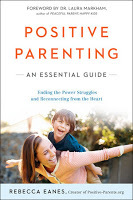
“Positive Parenting is more than a parenting book. It's a guide to human connection. Rebecca provides a roadmap for creating happy, deeply connected families where children and parents alike are able to rise to their fullest potential.” --Amy McCready, author of The “Me, Me, Me” Epidemic
To order in the USA: http://bit.ly/22ezDFN...
To order in Canada: http://amzn.to/1WBtjrF
To order in the UK: http://bit.ly/positiveparentinguk
To order from any other country: http://bit.ly/positiveparentingf
 Rebecca Eanes, is the founder of positive-parents.org and creator of Positive Parenting: Toddlers and Beyond. She is the author of 3 books. Her newest book, Positive Parenting: An Essential Guide, will be released on June 7, 2016 and is available for pre-order now. The Newbie's Guide to Positive Parenting and a co-authored book, Positive Parenting in Action: The How-To Guide to Putting Positive Parenting Principles in Action in Early Childhood are both best-sellers in their categories on Amazon. She is the grateful mother to 2 boys.
Rebecca Eanes, is the founder of positive-parents.org and creator of Positive Parenting: Toddlers and Beyond. She is the author of 3 books. Her newest book, Positive Parenting: An Essential Guide, will be released on June 7, 2016 and is available for pre-order now. The Newbie's Guide to Positive Parenting and a co-authored book, Positive Parenting in Action: The How-To Guide to Putting Positive Parenting Principles in Action in Early Childhood are both best-sellers in their categories on Amazon. She is the grateful mother to 2 boys.
Published on March 01, 2016 16:49
Staying Close in the Digital Age

Photo Credit: Creative Child Magazine
It is the age of being superficially known by hundreds and deeply known by no one, or by very few. We are virtually connected for much of the day, but our heart-to-heart connections are suffering - yet being known and accepted as we are, not as what we portray on social media, being seen and loved and valued at home, not seen and liked and noticed online, being connected to real people – these are what sustain us.
I understand the struggle of staying close when everything is pulling at our attention. My sons have iPads and Kindle Fires and X-Box systems. I have an online business. The pull is ever present, seeking to draw us into the online world and away from the blessings right in front of us.
I was struck by a passage in the book The Life-Giving Home by Sally and Sarah Clarkson. It says this, “If my awareness of space is concentrated on a screen, my home will reflect the absence of my attention, my creativity, and ultimately, my love.”
I think the conversation about screen time has been had many times already. How much screen time should children be allowed? Are parents too addicted to their phones? Just as we have become accustomed to doing, we scan these articles quickly, throw in our two cents in a depthless online conversation with strangers, comment about how ironic it is that we read such a piece on our phones, and move on to the next bit of information grappling for our attention.
For many, I see defenses swiftly raised, quick to defend the right to take a short break from the constant demands of parenthood. For others, pangs of guilt are expressed and then forgotten. But do we give careful, deep consideration to how this digital age is affecting our intimate relationships at home? Those who express a desire to change often feel hopeless to be able to effect it. The problem feels too big for us, too ingrained, and with so little control over the allure of the world wide web, we accept that this is the age we are living in.
But hope remains. If you haven’t heard of the Facebook page, The Hands Free Revolution , do visit it. Rachel, and her two beautiful books , are a beacon of hope for “letting go of distraction to grasp what truly matters.” Together, Rachel, Sally, and Sarah have inspired me to make the following changes in my own home.
These are not necessarily the changes you need to make, but rather this is an invitation to ponder deeply about the effects this digital age is having on you, personally, on your children individually, on your partner, on your relationships, and on your heart-to-heart connections. This is an invitation to make the changes that lead to your own best life.
1. Designate device-free times throughout the day.I used to grab my phone and check social media before I got out of bed. Now I reach for it only to turn on instrumental music to start my day to. This is a discipline, and there are still times I must occasionally check it early for my business, but I can tell a big difference in my peace of mind and mood when I begin my day scouring the endless feeds versus listening to music, tasting my coffee, and doodling in my journal. There is also no devices during dinner or during school work (unless we are using them for educational purposes).
2. Limit the time you and your family spend on the internet.My sons have things they like to watch online, but I only allow this between such and such times each day. Before I made this a rule, they’d want to be on it from afternoon to bedtime, and I can tell a difference in their moods as well when they’ve had too much screen time.
3. Fill up the empty spaces with connecting activities.If you just say, “No devices after 6 pm!” and don’t give them anything to do, children will become extremely bored and push against your limit. The goal isn’t just less screen time, but more time to connect heart-to-heart, so fill those spaces with reading books aloud as a family, board games, cards, making art, dancing, making music, playing ball, etc.
4. Do things online together.You can make screen time a connecting time if you spend it having fun with your child. Play a video game together or watch something online with your child. You should see the Minecraft castle I built. My kids were impressed.
5. Educate your children.Not only about the dangers of being online, but also how it affects their relationships, emotions, and brains. This video from BrainPopJr is about internet safety.
6. Talk to your kids.I think every parent should read this post, called Words We Cannot Afford to Keep From Our Children and have this conversation with your children.
7. Check out this summit.Join this free online telesummit about parenting in the digital age with such respected names as Susan Stiffelman, author of Presence Parenting, and Dr. Dan Siegel, author of No-Drama Discipline.
8. Be a good role model.The most important thing that you’ll “tell” your children about the importance of the online world is what you live.
*This article was originally published at Creative Child Magazine
 Rebecca Eanes, is the founder of positive-parents.org and creator of Positive Parenting: Toddlers and Beyond. She is the author of 3 books. Her newest book, Positive Parenting: An Essential Guide, will be released on June 7, 2016 and is available for pre-order now. The Newbie's Guide to Positive Parenting and a co-authored book, Positive Parenting in Action: The How-To Guide to Putting Positive Parenting Principles in Action in Early Childhood are both best-sellers in their categories on Amazon. She is the grateful mother to 2 boys.
Rebecca Eanes, is the founder of positive-parents.org and creator of Positive Parenting: Toddlers and Beyond. She is the author of 3 books. Her newest book, Positive Parenting: An Essential Guide, will be released on June 7, 2016 and is available for pre-order now. The Newbie's Guide to Positive Parenting and a co-authored book, Positive Parenting in Action: The How-To Guide to Putting Positive Parenting Principles in Action in Early Childhood are both best-sellers in their categories on Amazon. She is the grateful mother to 2 boys.
Published on March 01, 2016 16:37
7 Tips for Transitioning to Positive Parenting
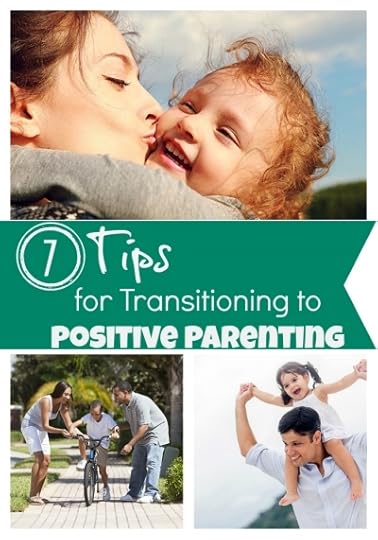
Photo Credit: Creative Child Magazine
So, you’re tired of the disconnection and power struggles that traditional parenting techniques bring and you’re ready to give positive parenting an honest go, like this mother did . But you’re not sure where to start. If you’re a newbie to positive parenting, these tips should help ease the transition.
Tip #1: Reframe Parenting Goals and Roles
It’s really helpful to get out of the mindset that you must control your child’s behavior. That’s an exhausting endeavor, and a feat you’ll never accomplish because, in the end, the only person you can ever really control is yourself. The goal of positive parenting is to raise thoughtful children with a strong sense of what is good and right and the inspiration and self-discipline to reach their highest potential.
That means your role is model, encourager, and mentor. I like to say I went from punisher to healer. Rather than punishing my child when his behavior got off track, I looked for the inner hurt that was causing his bad behavior and did my best to heal that hurt, whether it was disconnection, tiredness, hunger, or frustration.
Tip #2: Reframe Discipline
I’ve come to think of discipline in a different way. As I was trying to set a daily rhythm for our homeschool , my plans kept failing. I’d start the school year off with a bang, but several weeks in, our routine would slip, I would be less consistent with sticking to my predetermined schedule, and frustration would creep in. I realized I needed more discipline to keep a tight, consistent routine for the long haul. Did this mean I needed someone to come and sit me in a corner when I got off schedule? Of course not!
What I needed was inner motivation and better time management skills, not punishment. I think of discipline in the same way now for my children. My goal is always to teach them how to govern themselves – their emotions, spaces, time, behavior, etc. Therefore, I ask “what does he need right now to build self-discipline?” The answer has never been an arbitrary punishment.
Tip #3: Get Ahold of YourselfThis is probably the most challenging aspect of positive parenting, controlling your own thoughts, words, and actions. Old patterns are difficult to break, and you may find that you slip back into negative thinking, yelling , or a desire to punish often.
Like everything, practice makes you better. The more you choose a helpful or positive thought over a toxic thought or to step away and take a deep breath when you’re angry, the easier it will become for your brain to take that new pathway.
Tip #4: Get Your Partner On BoardThis is such a huge subject that I wrote a whole book about it. (Go ahead and pre-order it!) You can’t control your partner either, but you can inspire and influence him/her. Explain the brain science behind your change of parenting, your goals, and your new plan. Make sure your partner understands that this is not permissive parenting (a common worry I hear). Start by having a discussion to answer the following questions (taken from my book, Positive Parenting: An Essential Guide ).I feel that my partner is a good parent because____.I feel that my role as a parent is to ___.My parents were ___ and I feel that was ___.It’s most important to me for my child to be ___.These questions provide a good jumping off point to find your common ground. I recommend posing the question and taking turns answering each one and then letting the conversation flow. ...Continue reading tips 5-7 at Creative Child
Published on March 01, 2016 16:33
February 5, 2016
The Messages Behind Discipline
With every correction, I am giving my child a message about who he is.
Because children see themselves through the eyes of their parents, because what they see reflected in our eyes shapes who they become, because the truths they hold about themselves start as the truths we hold about them, there is perhaps no greater work than minding how we view our children and what messages we give them about who they are and what they’re worth.
The messages they get from us, particularly during correction, during the times we are not happy with their behavior or choices, influence their identities.
I was recently offered a course to review which has sharpened my awareness to this fact. Module 1 of the course invites parents to think of the messages we send during discipline, and as I’ve been working through this myself, I realized that this is something worth sharing. Most times, our intentions as parents are very good.
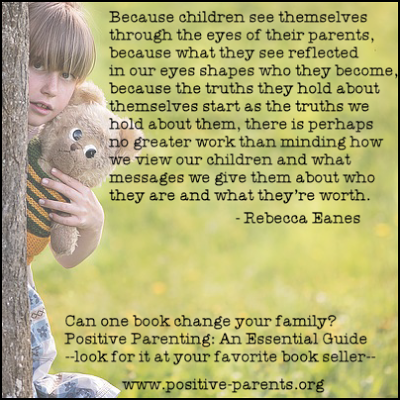
We want our children to make good choices. We want them to be responsible, considerate, kind, thoughtful, diligent, and so on. In an effort to instill such qualities in them, we correct them when they go off course, as we should.
Yet, the way in which parents choose to correct often sends a message which is the opposite of what we are going for.
In an effort to get a child to be responsible, we send the clear message of “you are irresponsible.” To make a child be more kind, we give the message “you are not kind.” Then, we stand in awe as they continue to exhibit irresponsible and unkind behavior, not understanding that we planted the very seeds we didn’t want to see spring up.
Let’s say 9-year-old James knows that he is supposed to sweep the patio before he can ride his bike. His father, Ben, comes outside to find the patio filthy and James biking. He motions to James to come over, and tells him, “Why didn’t you sweep the patio like you were told? I’m tired of having to tell you to do something several times before it gets done. You never take responsibility.”
What Ben wants is to teach James responsibility. The message James gets is “you are irresponsible.” Clearly, the intent doesn’t match the message. To more effectively instill these values, our messages need to be consistent with our intent, and this all starts within our own minds.
If we view our children as selfish, aggressive, irresponsible, lazy, etc., we will often speak forth the negative thoughts we allow to swirl. As always, change begins within. As I’ve been going through the Connected Families Spring Course , I’ve been taking notes of some of the negative thoughts I’ve allowed to fester in my mind. Thoughts which have made their way out of my mouth at times. “You never shut the door behind you!” “Why can’t you ever sit still for 5 minutes?”
What’s the message behind these words? Do they build a positive identity or negative? “Please shut the door.” “Please try to sit still.” These are requests without the baggage, yet how easy it was to spew the negative message with my requests!
How could Ben have handled the situation with his son in a way that gave a positive message to James, or at least didn’t give a negative message ?
“I asked you to sweep this off before you got on your bike. I’d like you do that now please.” He hands him the broom. “Thank you for doing that. I like seeing you be so responsible.”
Here are a few more examples:
Negative message: Don’t hurt your brother like that! That was naughty of you.
Positive message: Uh-oh, you lost your temper and hit your brother. I know you didn’t mean to hurt him. Come sit with me and I’ll help you get control.
Negative message: You need to stop crying and toughen up. It’s not a big deal. There are worse things in life!
Positive message: I can see you’re upset. How can I help?
Negative message: Whine, whine, whine. That’s all I ever hear from you! One more time, and you’ve lost television for the rest of the day!
Positive message: You’re a big girl now with a big girl voice. Let me hear your big girl voice so I can understand you better.
Negative message: Why can’t you be more like your sister? She works hard and passed all her classes.
Positive message: It looks like you’ve been struggling in this class. What can we do to help you succeed?
A subtle shift in our words makes a large impact on how our children view themselves. Don’t be fooled into thinking harsh words somehow motivate children to do better. Gracious words that encourage and build up, even during – especially during – times of correction will have a far more positive impact on who our children grow to be.
*This article was originally published at Creative Child Magazine
 Rebecca Eanes, is the founder of positive-parents.org and creator of Positive Parenting: Toddlers and Beyond. She is the author of 3 books. Her newest book, Positive Parenting: An Essential Guide, will be released on June 7, 2016 and is available for pre-order now. The Newbie's Guide to Positive Parenting and a co-authored book, Positive Parenting in Action: The How-To Guide to Putting Positive Parenting Principles in Action in Early Childhood are both best-sellers in their categories on Amazon. She is the grateful mother to 2 boys.
Rebecca Eanes, is the founder of positive-parents.org and creator of Positive Parenting: Toddlers and Beyond. She is the author of 3 books. Her newest book, Positive Parenting: An Essential Guide, will be released on June 7, 2016 and is available for pre-order now. The Newbie's Guide to Positive Parenting and a co-authored book, Positive Parenting in Action: The How-To Guide to Putting Positive Parenting Principles in Action in Early Childhood are both best-sellers in their categories on Amazon. She is the grateful mother to 2 boys.
Published on February 05, 2016 14:03
January 23, 2016
The Story of Home: Creating Family Culture
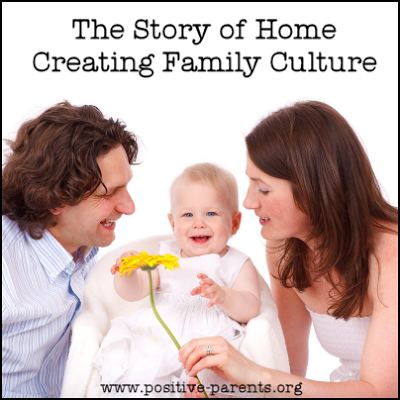
Home is the place where we first receive and practice love. It’s our first view of relationships. It’s the place where we (hopefully) experience acceptance, compassion, affirmation, and solace. Home is where we are shaped by the words and actions of those around us and by the atmosphere, the traditions, the routines, and the day-to-day experiences that we are provided.
All stories begin at home, and for us parents, we have an incredible opportunity because each and every day, we are writing the beginning of our children’s stories.
The question is, then, what story are we telling?
This is a broad topic which I cover in depth in my forthcoming book, Positive Parenting: An Essential Guide . Here, I will outline the 7 pillars of family culture mentioned in the book. Intentional, positive parents must create a plan and set themselves to the mission of crafting a beautiful beginning.
Without putting thought into the family culture we want to create, we will fall into a default culture created haphazardly over time.
7 Pillars of Family Culture:Pillar #1: Values
Deciding what values you want to pass on to your children is a great starting point for creating your family culture because those values will determine your own behavior and the expectations you hold for yourself as well as the children. Values are predominantly learned through the example you provide.
In my book , I say this: “It’s counterproductive to say respect is a family value if disrespect is often shown in the home. These values should be upheld so that they become simply a way of being and relating.”
Pillar #2: Dispositions
Disposition is defined as the quality of your mind and character. Your disposition must be brought under control to reflect your values and to create a positive home atmosphere. Allowing yourself to be very moody, easily shaken or angered, critical, or negative will have a poor effect on your family culture.
Bringing the quality of your mind and character in line with the culture you want to establish is easier said than done, but it is key. And while striving for excellence is good, we will never be perfect people living in a perfect family. Therefore, it’s important to learn to respect each other’s differences and quirks so that we can live in harmony.
Pillar #3: Expectations
Norman Vincent Peale said, “We tend to get what we expect.” I’ve found this to be quite true. If I expect to have a difficult, rushed day, I will have one. If I expect my children to get on my nerves, they will. Expectations are important because they color the way we view people, things, and situations. What you expect from your partner sets an example for what your children should expect of theirs one day. What you expect of yourself (whether too much or too little) is also being catalogued in your children’s minds.
Going further, what you expect from society, politicians, servers, police, etc. is being learned. What you expect in regard to lack or abundance, hardship or blessing, good luck or bad is being passed right down to your children, as are your partner’s. It’s easy to see how all these expectations play a part in shaping the family culture.
Pillar #4: Habits
Like our values and expectations, children pick up our habits, whether good or bad. Therefore, it is wise to drop any habit you don’t want your child to pick up. We must drop the “do as I say, not as I do” nonsense and realize that it is our example that speaks the loudest. Also, of course, some habits are just detrimental to the family and must be confronted before they cause lasting harm.
Pillar #5: Communication
Positive communication skills build positive bonds. I’ve written about communicating positively with children here . To summarize, this includes active listening (listening for the purpose of understanding, not just waiting your turn to get your point across), using respectful language and tone, empathizing with the speaker, being direct and assertive, and avoiding criticism and harsh words.
Pillar #6: Conflict Resolution
Even in the most connected families, conflict sometimes arises. Though this is really part of positive communication, it is so vital that it deserves its own discussion. This involves emotional intelligence and peaceful ways to talk the issue through and reach an agreement. This is a skill that takes a lot of time and practice to master and should be modeled in the home by the adults as well.
Pillar #7: Traditions
Traditions and rituals help every member of the family feel like they are part of something bigger than themselves. They solidify the family unit. I’ve written about the benefits of family traditions in this post .
Research has shown that family culture may play a more important role in shaping children than parenting style, and the type of culture a family creates strongly predicts happiness. This is the story of your home. Write it with vision.
**This article was originally published at Creative Child Magazine. See more of my Creative Child articles here.
Published on January 23, 2016 13:17
Beyond Behavior: Looking at the Heart of a Child
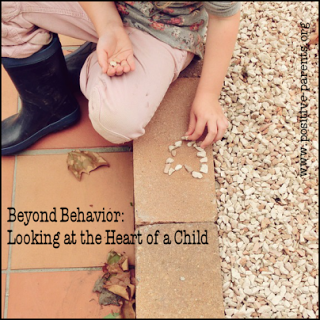
All three faces on his behavior chart were flipped to the sad face side. Again. That meant he had to go to time-out. Again. It didn’t take much to get a card flipped on the chart, which I thought was a simple and brilliant concept. From a sheet of construction paper labeled 'Behavior Chart' hung 3 cards, each with a happy face on one side and a sad face on the other.
My children started each day with 3 happy faces. Everything I deemed a misbehavior, from fighting with brother to not obeying my rules and commands, meant a card got flipped over. Three sad faces resulted in a time-out – three minutes to sit in a little chair in the hallway alone to “think about what he’d done.” At the time, it felt like a fair system of discipline, which I was assured needed to be completely consistent lest my children should get the idea that I could be manipulated.
Yet, every day was the same thing. Faces got flipped regularly as my immature children failed to spontaneously grow their brains upon my command. Time-out was enforced consistently, but no improvement in behavior resulted. I only saw more defiance. Frustrated and disconnected from my sweet little ones, I decided this story had to change.
It took a lot of research and heart searching to change my views on behavior, but what I finally came to believe was that discipline wasn’t about flipping sad faces on cards but about flipping sad faces on people. Discipline is reaching and teaching the heart.
Behavior is an outward reflection of the inner state and so poor behavior is a signal to me that my child is in need of help to restore his inner state to peace (or he needs to be taught specific skills). Defiance, though, is a heart issue and can only be resolved by restoring heart-to-heart connection.
The way our society views children doesn’t make this shift easy. For a couple of years, I bought into the wild accusations that my child would try to walk all over me, run my home, and become a nightmare if I didn’t put my iron fist down right away. I believed that discipline must be calculated, swift, and consistent. Although I considered myself “positive” because I didn’t use physical discipline, the goal was still to control behavior, albeit as nicely as I could.
Making the shift from control to reaching and teaching the heart meant I had to let go of my predetermined system and look at each child and each situation uniquely. Although there is no formula, I have found the following gifts of understanding to be helpful when looking beyond behavior to what my child’s heart is saying.
1. Understand brain development.
I wrote an article about the brain science that changed my parenting here. Knowing some basic information about which parts of my child’s brain were developed at birth and which parts would take years to develop helped me understand his behavior. When I realized that the area of his brain responsible for logic and reasoning wasn’t well developed at age 3, I finally understood why it was so difficult for him to foresee the consequences of his actions.
This didn’t mean that I waved off his behavior as something he couldn’t control but rather shifted my focus to helping him access his logic and reason more (which he couldn’t do when he felt threatened in time-out).
2. Understand the power of connection.
The more connected we are – the more our children feel safe, valued, and loved – the more influence we have. Shaming, isolating , and punishing only cause disconnection, making it much more difficult to have influence. Connecting even when (especially when) correcting gave me more influence to reach his heart.
...continue reading at Creative Child Magazine

Published on January 23, 2016 13:03
Turning Toward Our Children: Answering Bids for Connection
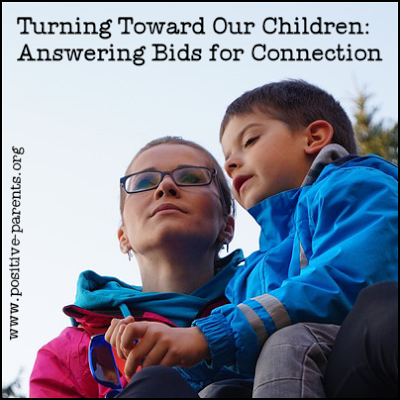
World-renowned relationship researcher and co-founder of The Gottman Institute, Dr. John Gottman, has conducted 40 years of research with thousands of people. From his research has emerged a practice that is important to the emotional connection between two people – the act of “turning toward” your loved one when a bid is made. What is a bid?
According to Gottman, a bid is an attempt to get attention, affection, or acceptance. It is a bid for emotional connection. “Will you play with me?” is an obvious bid, but not all bids are so clear. Therefore, it is good to familiarize ourselves with what bids are and to be mindful, being on the lookout for what our children say or do that may be a bid for connection. How we respond to these bids has a great impact on the connectedness we share with our loved ones. There are 3 responses to bids: positive (turning toward), negative (turning away), and no response (turning away).
Take for example a simple bid for attention. “Will you play with me?” A positive response would either be “Yes, let’s play” or something like “Oh, I would LOVE to play with you. You are my favorite person in the whole world to play with. At 6:00, I’ll be finished with my work and ready to play. Let’s make it a date!” This helps the child feel acknowledged and important. Each time you turn toward your child in this way, Gottman says you are making a deposit in their Emotional Bank Account.
A negative response would be “Can’t you see I’m busy?” or a flat “Not now.” Too many negative responses significantly damage the relationship.
No response might be a scowl and a waving away of the hand or completely ignoring that the child even spoke, which may be the most painful response of all.
Bids are offered both verbally and nonverbally, and it isn’t always easy to discern that a bid is being made, which is why being aware and positively responsive is key in building emotional connection. A toddler who holds his arms up to be picked up is making a bid for attention or affection. Poor behavior may also be a bid. How should we respond if a child makes a bid in a negative way, such as through misbehavior or a tantrum?
Conventional parenting wisdom says to respond negatively so as not to reinforce the poor behavior or tantrum, but children are often doing the best they can in that moment to get their needs met. No matter if the bid comes in the form of a sweet “mommy or daddy, let’s play” or a screaming tantrum, the message is exactly the same. “Notice me. Show me I matter.”
By giving a positive, loving response to the bid no matter what form it comes in, we fill our child’s emotional bank account and build connection. A child with a full bank is less likely to make bids in negative ways.
Here are some ways to “turn toward” your children when a bid is made:
Be attentive when they’re speaking to you. When we are too busy to look up and pay attention, we miss an important chance for connection.Be intentional about putting away distractions and focusing on your loved ones as often as possible. Be concerned about what they are concerned with. Even if what they are concerned about seems trivial, showing that you are concerned because they are builds the relationship. Convey the message “you are known and accepted” as much as you can. Avoid criticism and these 3 other relationship destroyers. Say “yes” to play. We have lots of other things to do, but nothing more important. Greet with enthusiasm. In the morning, after school, or after any extended separation, greet your children with warmth and a smile. Showing our children that we delight in them is a very simple but powerful connection builder.It isn’t possible to always give positive responses to bids, and that’s okay. The intention is to try, and when we fail, we can always come back to repair by making our own bids to them. As with all relationships, it’s about the quality of connection, not the presence of perfection.
**This article was originally published at Creative Child Magazine. See more of my articles for Creative Child.

Published on January 23, 2016 12:57
Two Words to Soothe a Child's Heart
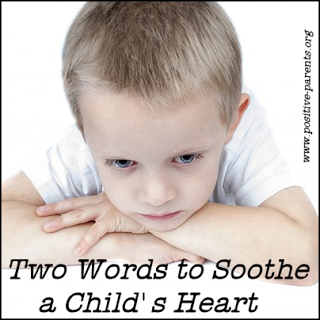
I had just gotten out of the shower and dressed when a knock came on the bathroom door.
"Yeah?" I answered.
"Mom, can I come in?"
"Just a minute" I said.
"It's really important."
I opened the door to the worried face of my 9 year old boy. He looked to be holding back tears.
"What is it?" I asked him.
"Mom, have I been a bit rude to you today?" he asked, tears welling up in his eyes now.
Confused by this, which I'm sure was evident in my facial expression, I said, "No, baby. You haven't."
He said, "Oh, OK. Good" and turned to walk away, but his face still had that worried look and I could tell he wasn't yet content.
I'm not sure where he had gotten the idea that he'd been rude that day. We'd had a small struggle with multiplication tables earlier in our homeschool in which he'd let me know he most certainly didn't want to memorize them. It hadn't been a big deal to me, and he hadn't been rude. He was irritated over math, and I can certainly relate to that feeling. Yet, apparently it was weighing heavily on the heart of this gentle-natured, soft-hearted, highly sensitive boy of mine.
"Hey," I called to him. He turned back toward me, eyes cast down. I lifted his face with my hands and said, "Hey. We're good." And the tears overflowed his eyes with my two simple words, and I held him in my arms until they ran dry.
Two simple words, "we're good," had released the ball of worry and tension inside him and soothed his heart.
Our relationship is still strong.
I still love you forever.
I still like being with you.
You're still welcome in my arms.
Nothing can separate you from my love.
You're good. I'm good. We're good.
I'm glad he was able to speak to me about the worry of his heart, and yet I wondered how many times there had been that he hadn't spoken it out. I wondered how often this tender boy had kept that ball of worry to himself, wondering if he'd gone too far. Wondering if he was still loved just as much. Wondering if he'd hurt me, or his dad, or his brother. Worrying. I was able to soothe him because he'd shared his thoughts with me, but how could I soothe his heart when he didn't say it was troubled?
I believe one of the greatest things we can do for our children is to offer a repair and reconciliation after any disturbance in the relationship, no matter how small or trivial it may seem. What hadn't been an issue for me had weighed heavily on my child, bringing him to tears.
What you didn't think was a big deal may have bruised a heart.
What you didn't see as an issue may be weighing heavily on a loved one.
What you think is just another conflict, just another argument, just another harsh word spoken may leave your child wondering "Are we okay? Am I still loved as much? Does she still like me? Does he still want me around?"
"Are we good?"
Our connection matters. Our children feel it. They need it. They need to know that, no matter what transpired today, no matter what was said, no matter what was spilled or knocked over or broken or uttered, we are good.
I'm not counting your mistakes or flaws.
I keep no record of wrongs.
Nothing can make me love you less.
I will always love you.
I will always want you.
My arms are always open to you.
You are safe with me.
We're good. Always, we're good.
We mean so much to our children. Our love and acceptance is their lifeline. Make sure the sun never goes down with a worry of connection on your child's heart. After every struggle, tell them "we're still okay." After every correction, let them know, "I still like you." After each argument, every harsh tone, every piercing scowl, each display of irritation, let them know, "Hey, we're not perfect, but my love for you is."
"My love for you is perfect and strong and can never diminish. I like you. I adore you. I'm so glad you're mine. So very thankful that you are mine."
Release the worry and tension that may be bound up and allow them to rest in your love. Always.
"We're good." Yes, we are.
Published on January 23, 2016 11:07



